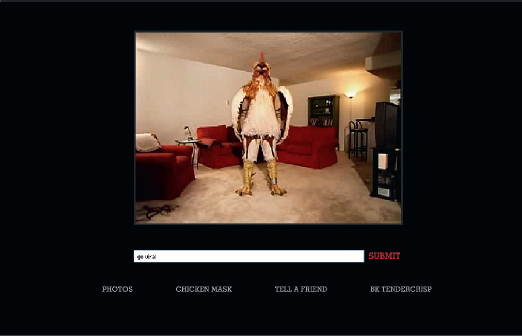Why ads go viral
It began as a spontaneous fusion of creative exuberance and commercial opportunism. The clever, branded clip, the watchable, cheaply shot video for a niche product, the edgy edit of a popular TV ad, uploaded, seeded and, fingers crossed, freely shared. The aim was as simple as it was innocent: to break through, to be viewed by millions – to go viral.
Now, though, it’s all metrics and ROI, just like every other branch of marketing communications. The coming of age was crystallised one month ago when Marc Pritchard, chief marketing officer of Procter & Gamble, put a number on the line between success and failure. “If a brand video gets 7,000 hits in three days, “he told a rapt WACL audience, “take it down. It’s a pig.”
So marketers and their creative luminaries find themselves huddled in a more earnest, target-driven approach to creating online content, anxious to ensure that their efforts will do what pigs do not, and fly. It’s a more serious game now. What are the rules, though? What are the red-hot pointers to viral success?
Enter the academics. Finding elegant ways to measure social phenomena is a passion of the academic mind, so these guys have, in the short history of viral content, generated volumes of research to illuminate what gets shared and what doesn’t.
In a 2011 paper entitled ‘What Makes Online Content Viral’, Jonah Berger and Katherine Milkman built on the psychological concept of ‘valence’. This is the degree to which stimulus is positive or negative. By valence-coding articles from The New York Times, and tracking which ones were emailed on to family and friends by readers, they confirmed what other studies had already shown: that positive content is far more frequently shared.
They uncovered an important nuance, though. Negative content can still be viral if it evokes active, rather than passive, emotions. If it tends toward the reflective and sad, it is probably a ‘pig’. However, if it promotes high-arousal states such as anger or anxiety, it could well fly.
In ‘The New Science of Viral Ads’, published in the Harvard Business Review, Thales Teixeira reports how he and two colleagues used eye-tracking techniques to analyse response to branded video content. Their chief insight is that people start to get bored immediately, so surprise should not be left to the end of the spot, as it is in many conventional ads, but should hit in the first five seconds – or people will close the link, and sharing stops.
Meanwhile, a much-cited paper from Andrea Wojnicki and David Godes comes at viral the other way, by focusing on the psychological motivations of the sharer rather than the content itself. Although the verb ‘share’ tends to suggest altruism, they show that the act of online sharing is dominated by selfish motives, principally as a means of enhancing self-image.
The upshot is that it may pay to study the particular motivations of sharers in your category, as an impetus to more-effective viral creation.
I have posted links to these papers on Twitter. For now, though, let me simply share this: while general pointers are useful, the most successful work will always result from the intuitive genius that dares to rise above them – so don’t constrain that spontaneous creative exuberance, if you really want to fly.
A Nike video of Brazilian footballer Ronaldinho repeatedly bouncing a ball off the crossbar without it touching the ground was the first video to reach 1m views on YouTube. Despite the handheld-camera style, the stunt’s authenticity was the subject of much debate.
With more than 5m shares, Volkswagen‘s ‘The Force’ is the most-passed-on commercial to date. However, its success wasn’t a fluke: VW also forked out for a slot during the Super Bowl, some of advertising’s most expensive and traditional real estate.

Burger King interactive pioneer
Burger King‘s ‘Subservient Chicken’ was the first interactive video to go viral, in 2001. The ad for the chain’s TenderCrisp chicken sandwich gave the ‘Chicken the way you like it’ tagline a literal meaning: viewers typed in a command and a man in a chicken suit seemingly obliged. The chicken was programmed to offer more than 300 responses, from the comic – ‘do the Macarena’ – to the morbid – ‘die’. In its first week the video received 46m commands.
Last month Kony 2012 – a video made by charity Invisible Children to raise awareness and encourage donations – became the fastest-growing online campaign to date, rocketing to 70m views, and into a barrage of controversy, in five days.
